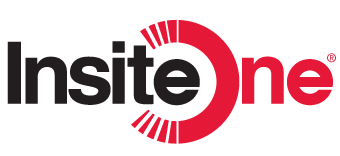Is Your Radiology PACS Futureproof?

Introduction
Medical imaging volumes have increased significantly over the past 5 years and will continue to increase, especially specialized imaging like CT and PET. This has caused an exponential growth in storage requirements due to higher resolution modalities as well as overall patient volume. This rapid evolution raises a critical question for healthcare facilities: Is your current radiology PACS futureproof? As imaging technology continues to advance at an unprecedented pace, many healthcare organizations find themselves operating with systems that were designed for yesterday’s challenges, not tomorrow’s demands.
A modern radiology PACS must be capable of handling increasing volumes of complex imaging data while maintaining performance. The consequences of maintaining an outdated PACS infrastructure extend beyond mere technical limitations—they directly impact organizational risk, operational efficiency, clinical outcomes and ultimately, patient care.
This article examines the essential components of a futureproof PACS, identifies warning signs that your current solution may be approaching obsolescence, and provides actionable guidance for healthcare leaders navigating the complex landscape of medical imaging technology.
Evaluating Your Radiology PACS for Future Readiness
First things first, let’s define futureproof. Futureproof is often used to describe IT systems, meaning they are guaranteed to not be superseded by future versions and new developments. Developing solutions that can evolve as technology changes and anticipating what those future changes will be, along with minimizing the effects of updating the technology, guides developers to design solutions that stand the test of time.
When evaluating your radiology PACS, consider both current functionality and future expansion capabilities. Today’s healthcare environment demands systems that can adapt to changing requirements without requiring complete replacement. The evolution of medical imaging PACS has transformed how healthcare facilities store, access, and share diagnostic images.
Below are several key indicators that your existing PACS may not be as futureproof as you think:
- Limited interoperability with other clinical systems
- Inability to handle increasing study volumes without performance degradation
- Lack of support for emerging imaging modalities and formats
- Restricted access options and workflows for remote radiologists and clinicians
- Minimal or no AI integration capabilities
- Aging hardware infrastructure with limited expansion options
- Vendor roadmaps that show minimal innovation or development
A recent HIMSS cybersecurity report indicates that more than 39% of healthcare personnel are working with legacy systems of all types. These solutions were designed before the adoption of cloud technology, widespread artificial intelligence (AI) solutions, and modern system interoperability. Are legacy systems holding your organization back?
Key Components of a Futureproof Radiology PACS
Investing in a futureproof radiology PACS requires careful consideration of vendor roadmaps and technology partnerships. The most resilient systems share multiple characteristics that position them for longevity in our rapidly evolving healthcare technology landscape.
Cloud-Native Architecture
Modern PACS solutions are leveraging cloud technologies to provide scalability, enhanced accessibility, and reduced infrastructure costs. Cloud-based PACS solutions offer significant advantages in terms of scalability and remote access capabilities and are critical for organizations that are moving to teleradiology workflows. These systems can dynamically adjust storage capacity based on demand, eliminating the need for costly hardware upgrades as imaging volumes increase.
Key benefits include:
- Reduced on-premises hardware requirements
- Automatic unlimited scaling to accommodate growing study volumes or peak/off peak demands
- Enhanced disaster recovery and business continuity capabilities
- Simplified system updates and maintenance
- Support for remote reading and teleradiology workflows
Interoperability and Integration
Modern PACS solutions balance technical sophistication with intuitive user interfaces for clinical staff. True interoperability extends beyond basic DICOM compatibility to include:
- Seamless integration with electronic health records (EHRs)
- Support for emerging standards like FHIR
- Cross-department image sharing capabilities
- Integration with specialty clinical systems
- Vendor-neutral storage (VNA) infrastructure
- Standardized APIs for third-party integrations
Optimizing your PACS network connections is another area to address when modernizing your imaging technology stack. Evaluate network performance during peak usage periods and adjust to ensure that as imaging volume grows, performance will not be impacted due to larger file sizes during transmission.
AI Integration and Advanced Analytics
Modern PACS solutions include advanced integration capabilities with artificial intelligence solutions for both clinical and operational workflows. Consider the following when evaluating today’s modern solutions:
- Automated image analysis for specific conditions based on algorithms that align with your patient population
- Workflow prioritization based on AI findings (workflow orchestration)
- Quality control algorithms to ensure optimal image acquisition
- Predictive analytics for resource planning and utilization
- Natural language processing for advanced report generation and analysis
By providing greater interoperability with 3rd party AI solutions, enhanced workflows, offering faster exam prioritization, can lead to radiologist efficiency and better patient outcomes.
Robust Security
We’re living in unprecedented times where almost daily healthcare entities are struggling with cybercrime, data breaches or ransomware attacks. Solutions that put security as a priority and design and validate their solutions with the latest data security standards are extremely important to ensure your patient data will be safe and secure for years to come. Data encryption (both at rest and in transit), HIPAA compliance, and certified validations (like SOC2 or HITRUST) are good indications you are investing in the safest solutions available on the market today.
Evolving From Departmental to Enterprise Workflows
Early PACS solutions focused on the radiology department. Today’s modern solutions have expanded workflows and capabilities to support more strategic enterprise imaging initiatives that encompass multiple specialties like cardiology, pathology, dermatology, ophthalmology, surgery, and wound care.
Some modern PACS solutions, like those developed by InsiteOne, use a vendor neutral back end for image archiving and provide a well-designed architecture that provide advanced workflows for the radiology department but accommodates enterprise workflows in other imaging specialty areas. A key benefit of enterprise based PACS solutions is their ability to lower overall operational costs by consolidating image archiving into a single standards-based back-end infrastructure, while providing advanced clinical tools that address various workflow needs for the end users. Offering a holistic longitudinal view of the patient’s imaging record in connection with their clinical record through the hospital’s EHR, provides improved clinical insight plus enhanced collaboration capabilities among clinical staff.
Cloud-Based vs. On-Premises PACS
Healthcare organizations face important decisions regarding deployment models for their imaging systems. Both cloud-based and on-premises approaches offer distinct advantages and limitations that must be evaluated in the context of specific organizational needs.
| Consideration | Cloud-Based PACS | On-Premises PACS |
| Initial Investment | Lower capital expenditure | Higher upfront costs |
| Scalability | Dynamic, on-demand scaling | Fixed capacity requiring planned upgrades |
| Accessibility | Native support for remote access | Requires VPN or additional security layers |
| Security Control | Often significantly more robust security than on-premises. Also can be a shared responsibility model | Local control over security measures, which could be lest robust than those offered by native cloud solutions |
| Maintenance | Vendor-managed updates. Can be offered as a full managed service model. | Internal IT resource requirements. Can be offered as a shared or full managed service offering. |
| Network Dependency | Requires reliable internet connectivity. Can also be offered as a hybrid configuration with local storage and network aware capabilities to access the fastest connection point. | Functions within local network |
| Disaster Recovery | Built-in redundancy and failover. Can also provide enhanced business continuity options. | Requires separate DR planning and infrastructure, oftentimes replicating the cost of your original PACS system. |
Most cloud-based solutions offer hybrid configurations (providing some local storage) to provide uninterrupted access to patient images should internet access be temporarily disrupted. This is an especially important consideration when organizations offer emergency services, so patient care is not impacted.
Quantifiable Benefits of PACS in Radiology
As radiology transitioned from film to digital several decades ago, the benefits of PACS in this transition became apparent. Providing always available and device agnostic access to images was a key benefit, offering easier access, better collaboration, and enhanced patient care. Other quantifiable benefits that have been realized in this transition include:
- Up to 30-50% reduction in report turnaround time
- Average of 20-40% increase in radiologist productivity
- Near elimination of lost or unavailable studies
- Improved clinical collaboration
- Enhanced patient satisfaction due to faster results delivery
Recommendations for Assessing Your Current PACS
To determine if your current PACS system is futureproof, consider conducting a structured assessment using these criteria:
- Technical Evaluation
- Review system architecture against current industry standards
- Assess hardware age and projected lifespan
- Evaluate storage utilization and growth patterns
- Analyze network performance during peak usage periods
- Review system uptime and reliability metrics
- Clinical Workflow Assessment
- Gather feedback from radiologists on system usability
- Measure report turnaround times and identify bottlenecks
- Evaluate remote access capabilities and performance
- Assess integration with clinical decision support tools
- Review image quality and visualization capabilities
- Strategic Alignment
- Compare current capabilities with organizational growth plans
- Evaluate vendor partnership and innovation roadmap
- Assess total cost of ownership and ROI
- Review compatibility with emerging technologies
- Evaluate security and compliance capabilities
For even more guidelines on performing a PACS assessment at your facility, be sure to download our latest PACS Assessment guide.
Conclusion
The question “Is your PACS futureproof?” requires thoughtful consideration of both current capabilities and future requirements. As imaging technology continues to evolve, healthcare organizations must ensure their PACS infrastructure adapts to changing demands without requiring complete replacement.
A truly futureproof PACS combines technical excellence with workflow optimization, security, and scalability. By evaluating your current system against the criteria outlined in our PACS Assessment guide, you can identify potential gaps and develop a strategic plan for ensuring your imaging infrastructure remains capable of supporting excellent patient care for years to come.
The most successful organizations approach PACS futureproofing as an ongoing process rather than a one-time project. By continuously monitoring system performance, staying informed about emerging technologies, and maintaining strong vendor partnerships, healthcare leaders can ensure their imaging infrastructure remains aligned with both clinical needs and organizational objectives well into the future.
For more information on how InsiteOne can provide a tailored solution to meet your organization’s modern PACS needs, contact us at 866.467.4831or visit us here.





